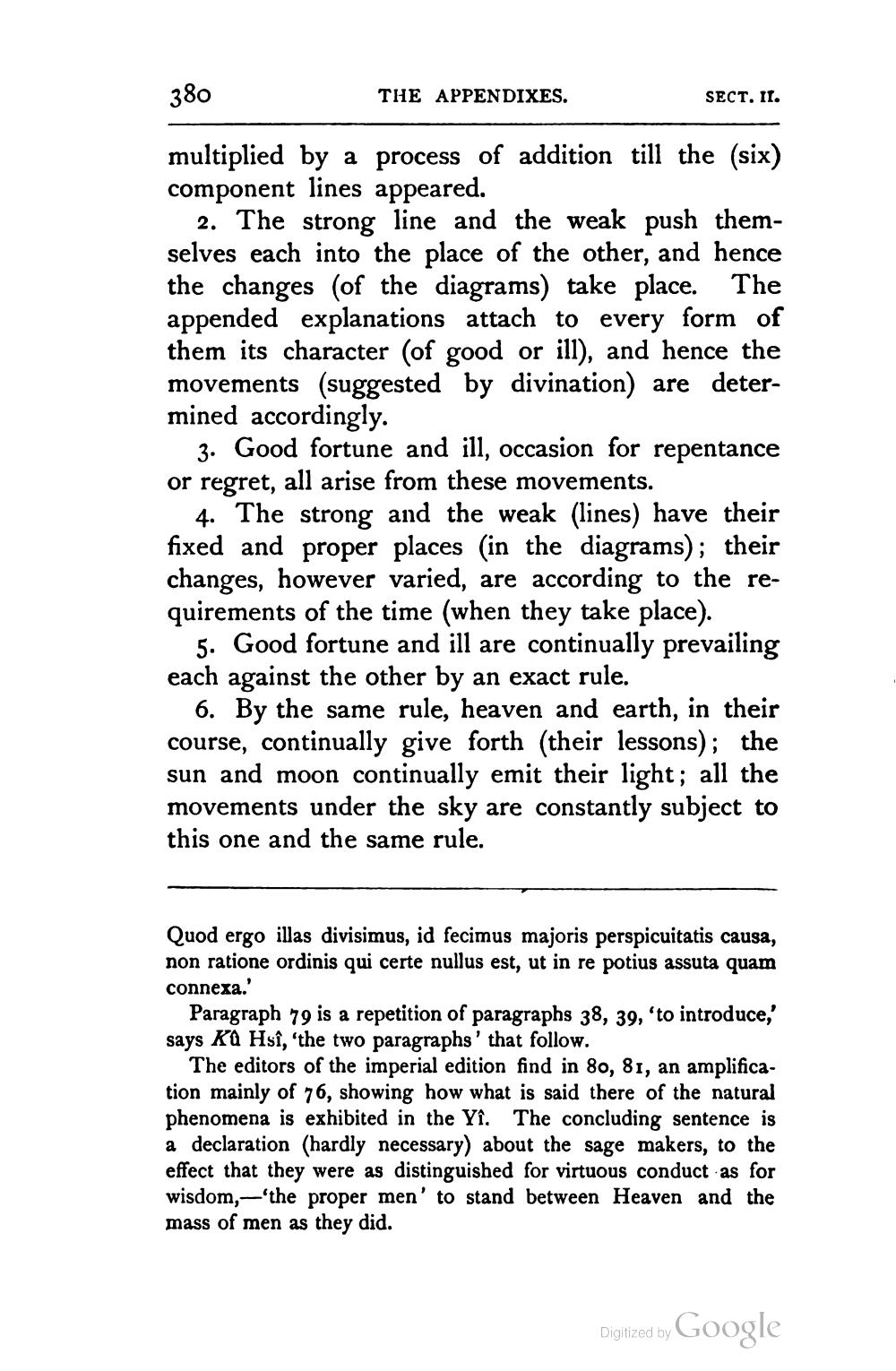________________
380
THE APPENDIXES.
SECT. II.
multiplied by a process of addition till the (six) component lines appeared.
2. The strong line and the weak push themselves each into the place of the other, and hence the changes of the diagrams) take place. The appended explanations attach to every form of them its character (of good or ill), and hence the movements (suggested by divination) are determined accordingly.
3. Good fortune and ill, occasion for repentance or regret, all arise from these movements.
4. The strong and the weak lines) have their fixed and proper places in the diagrams); their changes, however varied, are according to the requirements of the time (when they take place).
5. Good fortune and ill are continually prevailing each against the other by an exact rule.
6. By the same rule, heaven and earth, in their course, continually give forth (their lessons); the sun and moon continually emit their light; all the movements under the sky are constantly subject to this one and the same rule.
Quod ergo illas divisimus, id fecimus majoris perspicuitatis causa, non ratione ordinis qui certe nullus est, ut in re potius assuta quam connexa.'
Paragraph 79 is a repetition of paragraphs 38, 39, 'to introduce, says KQ Hsî, 'the two paragraphs' that follow.
The editors of the imperial edition find in 80, 81, an amplification mainly of 76, showing how what is said there of the natural phenomena is exhibited in the Yî. The concluding sentence is a declaration (hardly necessary) about the sage makers, to the effect that they were as distinguished for virtuous conduct as for wisdom,-'the proper men' to stand between Heaven and the mass of men as they did.
Digitized by Google




